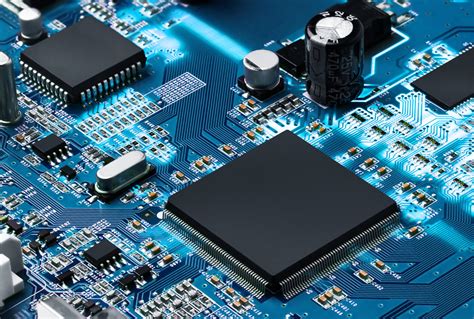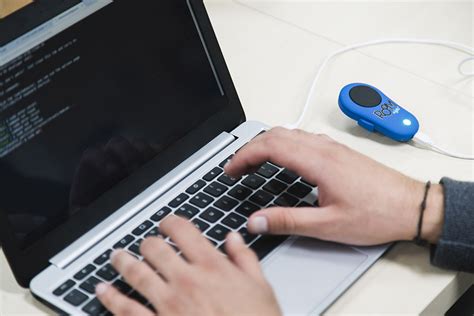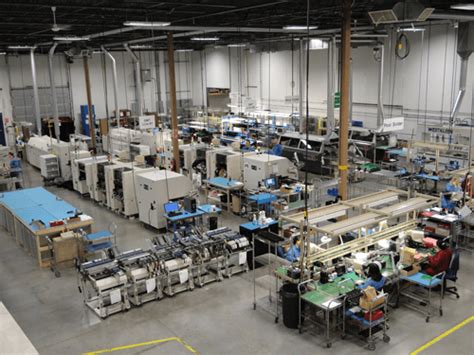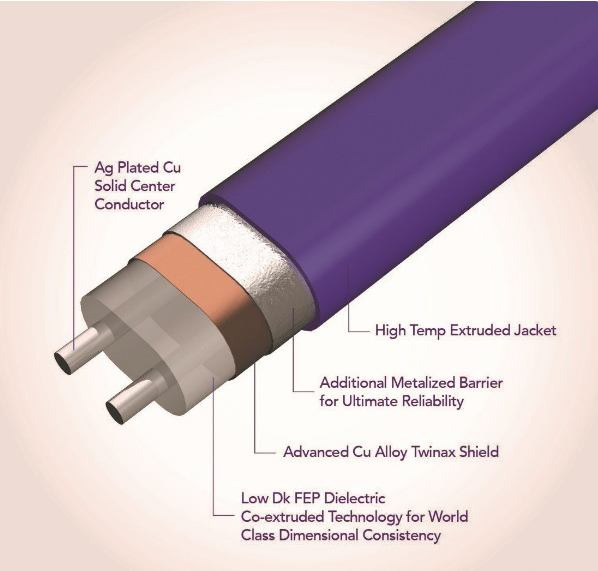Unlocking Efficiency: The Benefits of Consigned PCB Assembly
Key Takeaways
In the realm of pcb assembly, implementing consigned PCB assembly offers a variety of benefits that can significantly impact manufacturing operations. One primary advantage is the ability to streamline workflows, which enhances productivity by minimizing delays and ensuring that components are readily available when needed. This approach not only reduces the time spent on assembly but also helps in maintaining a consistent quality throughout the production process. Moreover, cost reduction is another critical factor; businesses can save on overhead and minimize waste by managing their inventory more effectively and only procuring necessary materials. The flexibility offered by this model also plays a vital role, as it allows companies to adapt their production schedules to meet changing market demands or customer needs. Furthermore, technology integration in pcba processes enables real-time tracking and optimization, paving the way for even greater efficiency. As organizations continue to embrace this method, they uncover numerous success stories illustrating how consigned PCB assembly has transformed their manufacturing capabilities for the better, leading to enhanced performance and competitiveness in a dynamic marketplace.
Understanding Consigned PCB Assembly: An Introduction
Consigned PCB assembly, often referred to as PCBA, represents a significant evolution in the landscape of electronic manufacturing. This approach enables businesses to take control of vital components in the pcb assembly process, allowing them to manage the procurement of materials while outsourcing the assembly tasks to experienced manufacturers. By doing this, organizations can not only streamline their operations but also foster a more collaborative relationship with their assembly partners. The flexibility inherent in consigned PCB assembly leads to improved inventory management and can result in substantial cost savings, as companies are able to adjust their purchases based on demand forecasting rather than relying solely on suppliers’ stock. Furthermore, this method facilitates a more agile production workflow, where slight modifications in circuit board designs can be accommodated without significantly disrupting the manufacturing schedule. Ultimately, consigned PCB assembly sets the stage for manufacturers eager to bolster efficiency and adapt to evolving market demands while maintaining quality and accountability throughout the entire production cycle.
Streamlining Manufacturing Processes with Consigned PCB Assembly
The implementation of consigned PCB assembly (PCBA) has proven to be a transformative strategy for manufacturers aiming to enhance their production efficiency. By optimizing manufacturing processes, companies can facilitate a smoother workflow that minimizes delays and maximizes productivity. One of the significant advantages of consigned PCBA is the ability to manage resources more effectively, allowing businesses to align their supply chain and production capabilities closely.
In a traditional assembly setup, delays in material availability can result in bottlenecks; however, with consigned inventory, companies have immediate access to the components needed for their projects. This not only shortens lead times but also reduces excess inventory costs, creating a more responsive and cost-effective approach to manufacturing.
“Streamlined processes are essential in today’s fast-paced environment; embracing technologies like consigned PCBA could transform operational dynamics.”
To illustrate the impact of this approach, consider the following table that highlights key considerations when implementing PCB assembly strategies:
| Aspect | Traditional Assembly | Consigned PCB Assembly |
|---|---|---|
| Lead Time | Longer | Significantly shorter |
| Inventory Management | Often excessive | Just-in-time availability |
| Cost Implications | Higher operational costs | Reduced costs through efficiency |
| Flexibility | Limited | Enhanced responsiveness |
This comparison elucidates how manufacturers can pivot towards more agile and financially viable production workflows. The integration of consigned PCB assembly not only streamlines processes but confirms its role as an essential element in modern manufacturing strategies. As businesses continue to seek innovative solutions, aligning operations with such methodologies becomes increasingly vital for achieving lasting success in intricate market landscapes.
Cost Reduction Strategies through Consigned PCB Assembly
Embracing consigned PCB assembly offers businesses significant opportunities for cost reduction, making it an appealing option for manufacturers aiming to improve their bottom line. By shifting procurement responsibilities to the customer, firms can avoid the overhead costs associated with inventory management. This model enables businesses to purchase PCB assembly components directly, allowing them to identify bulk purchasing opportunities and negotiate better prices with suppliers. Moreover, the pcb assembly process can be optimized by reducing waste—both in terms of materials and time—when companies handle component sourcing directly. This direct control allows for meticulous oversight of materials, which can lead to improved quality in finished products while minimizing expenses linked to poor quality or defects in earlier production stages. Additionally, flexibility is enhanced as organizations can adjust orders based on demand fluctuations without the lead time typically needed for traditional supply chain processes. In essence, consigned PCB assembly not only streamlines operations but also paves the way for significant savings, clearly illustrating its role as a crucial strategy in modern manufacturing frameworks.
Enhancing Flexibility in Production Workflows
One of the most significant advantages of consigned PCB assembly lies in its ability to enhance flexibility in production workflows. By allowing businesses to maintain control over their material inventory, manufacturers can adapt more swiftly to changes in demand or design specifications. This level of adaptability enables a more responsive approach to market fluctuations, reducing lead times and enhancing the overall agility of production processes. Furthermore, utilizing pcba within consigned assembly facilitates a seamless integration of various components, allowing for customized manufacturing solutions that meet specific project requirements. As a result, businesses can better align their production schedules with customer demands and minimize downtime caused by material shortages or delays. The interconnected nature of pcba also empowers organizations to implement just-in-time strategies, reducing excess inventory and increasing cash flow efficiency. This flexibility not only streamlines operations but also positions companies to capitalize on emerging opportunities in a competitive landscape, demonstrating that consigned PCB assembly is not just a method of production but a strategic advantage for responsive and efficient manufacturing workflows.
The Role of Technology in Optimizing Consigned PCB Assembly
In today’s rapidly evolving manufacturing landscape, the integration of advanced technology plays a pivotal role in optimizing consigned PCB assembly processes. Automation, for instance, has transformed traditional pcb assembly lines by enhancing accuracy and reducing the risk of human error. By employing cutting-edge machinery and software, businesses can not only speed up assembly but also streamline quality control measures, ensuring each printed circuit board (PCB) meets precise standards. Additionally, data analytics enable real-time monitoring of production workflows, providing actionable insights that help identify bottlenecks and inefficiencies in the assembly process. This adaptability means that companies can respond swiftly to changing demand while maintaining a focus on cost-effectiveness. Furthermore, the use of cloud-based platforms fosters greater collaboration between stakeholders involved in the pcba process, allowing for instant information sharing and improving overall communication. Ultimately, by leveraging these technological advancements, organizations can reap the benefits of greater efficiency and flexibility in their manufacturing operations—critical factors that underscore the value of adopting a consigned approach to pcb assembly.
Case Studies: Success Stories of Consigned PCB Assembly
In recent years, companies across various sectors have embraced consigned PCB assembly, leading to remarkable improvements in their manufacturing processes. One notable example is a mid-sized electronics manufacturer that transitioned to consigned PCB assembly to enhance its production efficiency. By taking control of the component sourcing, the company could reduce both lead times and inventory costs significantly. This approach allowed for a more agile response to market demands, ultimately positioning them ahead of competitors relying on traditional methods.
Another compelling case is that of a telecommunications firm that integrated PCB assembly services into its workflow. By opting for pcba solutions, they achieved not only significant cost reductions but also a decrease in waste, facilitating a leaner manufacturing system. Their decision to partner with specialized providers enabled them to leverage advanced technologies, ensuring that the quality and reliability of their products met stringent industry standards without compromising on flexibility.
These examples illustrate how consigned PCB assembly can be a game changer for organizations looking to refine their operations. They demonstrate not just the operational benefits—such as reduced time-to-market and enhanced collaboration with suppliers—but also underline the competitive advantage gained by adopting this innovative assembly technique. As more businesses embrace this model, its impact on overall manufacturing efficiency continues to resonate through improved processes and increased market responsiveness.
Overcoming Challenges in Implementing Consigned PCB Assembly
Implementing consigned PCB assembly can present a variety of challenges that businesses must navigate to fully harness its benefits. One notable obstacle is ensuring effective communication along the supply chain. Coordination between different stakeholders—ranging from suppliers to manufacturers—plays a critical role in the success of PCBA projects. Additionally, businesses must invest in thorough training for staff to adapt to new processes and workflows associated with pcb assembly. This ensures that everyone involved has a solid understanding of the specifications and quality standards needed throughout production. Furthermore, managing inventory effectively becomes imperative; companies often face the difficulty of balancing raw material stock levels with production needs to prevent delays or excess costs. It’s essential to leverage modern technology solutions for real-time tracking and management of components, which can aid in improving responsiveness and mitigating risks related to supply shortages or excess inventory. Overcoming these challenges ultimately requires a proactive approach, integrating best practices with innovative solutions, thereby paving the way for a smoother transition into a successful consigned PCB assembly model that enhances overall manufacturing efficiency.
Future Trends in Consigned PCB Assembly and Manufacturing Efficiency
As industries continue to evolve, the future of consigned PCB assembly (PCBA) is poised for transformative advancements. One of the emerging trends is the increasing integration of automation in PCB assembly processes, leading to enhanced efficiency and reduced error rates. By employing robotics and smart machinery, businesses can not only expedite production timelines but also maintain high levels of precision. Additionally, the growing use of data analytics plays a pivotal role in refining manufacturing workflows. By leveraging real-time data, companies can identify bottlenecks and optimize production schedules, ultimately improving overall operational effectiveness.
Another significant trend is the shift towards sustainability. Many manufacturers are seeking ways to minimize their environmental impact while still achieving competitive PCBA solutions. This includes adopting eco-friendly materials and processes that reduce waste and energy consumption during the assembly process. Furthermore, collaboration among suppliers and manufacturers will likely increase, facilitating a more agile supply chain that responds efficiently to market demands.
As we look ahead, it’s clear that the future of consigned PCB assembly will be characterized by these ongoing innovations, addressing challenges while unlocking further opportunities for improved manufacturing efficiency across various sectors. By staying attuned to these trends, businesses can position themselves favorably in an increasingly complex market landscape.
Conclusion
In summary, consigned PCB assembly has proven to be a game-changer for many businesses aiming to enhance their manufacturing capabilities. By adopting this model, companies are not just streamlining their production workflows but also benefiting from significant cost reductions. The flexibility afforded by pcba processes enables manufacturers to adapt quickly to market demands and customer expectations. As manufacturers increasingly utilize technology to optimize their operations, the results are promising: improved efficiency, reduced waste, and a stronger competitive edge in the marketplace. Ultimately, the strategic implementation of consigned PCB assembly can serve as a substantial driver for growth and innovation, providing businesses with the tools they need to thrive in today’s fast-paced environment. Recognizing these advantages will guide future decisions in manufacturing strategies, ensuring continued success and adaptability.
FAQs
What is consigned PCB assembly?
Consigned PCB assembly refers to the practice where a manufacturer supplies their own components for the assembly of printed circuit boards (PCBs). In this approach, the PCB assembler utilizes the client’s components to create a final product, often referred to as PCBA (Printed Circuit Board Assembly).
What are the main advantages of using consigned PCB assembly?
The primary benefits of consigned PCB assembly include enhanced manufacturing efficiency, cost reduction, and improved flexibility in production workflows. By allowing businesses to provide their own components, it helps streamline processes and minimizes procurement costs.
How does consigned PCB assembly reduce costs?
Using consigned PCB assembly, manufacturers can lower expenses associated with component sourcing and inventory management. By purchasing components in bulk or utilizing existing stock, companies can achieve significant savings while still ensuring high-quality production.
Can consigned PCB assembly improve manufacturing flexibility?
Absolutely! The ability to control component procurement gives businesses greater flexibility in managing their production schedules and responding to market demands. Companies can adapt quickly by choosing specific parts or adjusting designs without waiting for third-party suppliers.
What role does technology play in optimizing consigned PCB assembly?
Advanced technologies such as automation and software tools play a vital role in enhancing PCB assembly processes. They facilitate better inventory management, streamline communication between suppliers and manufacturers, and improve overall production accuracy.







